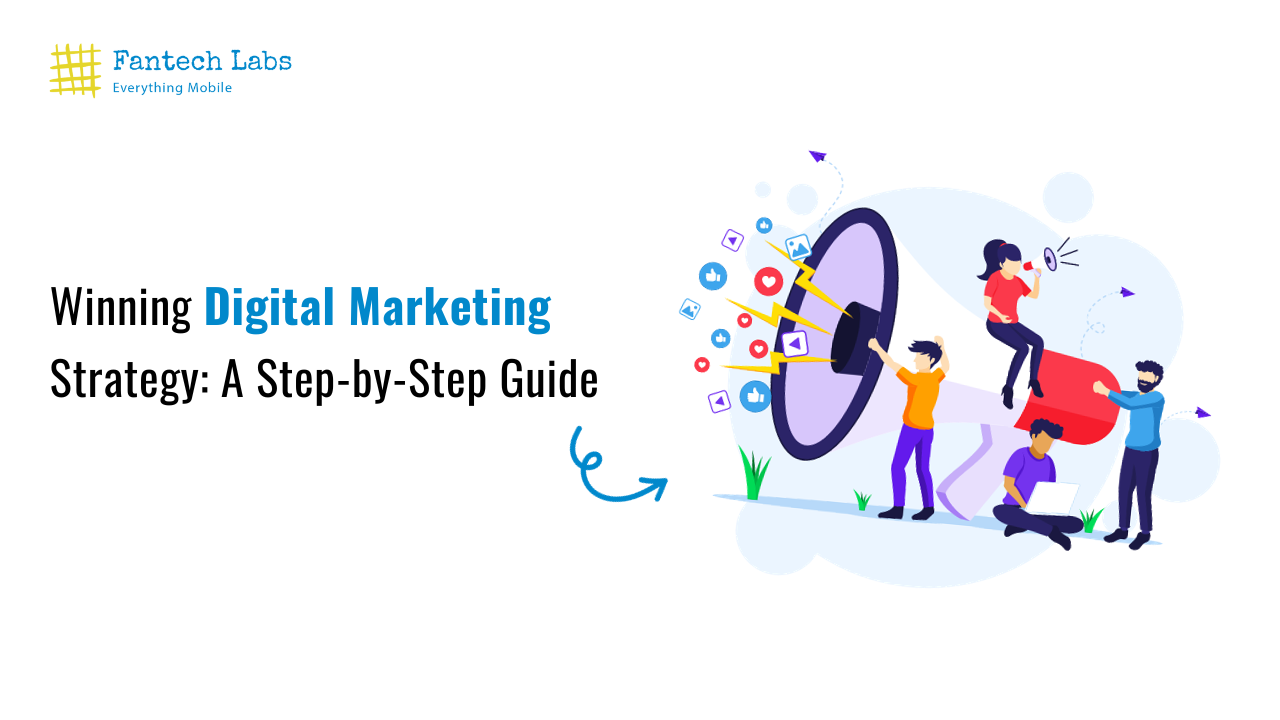A digital marketing strategy is part of a larger business plan that outlines how the organization will be able to reach its overarching business goals using digital channels as a means of reaching those goals.
A successful business relies heavily on a digital marketing strategy. It is one thing to create a strategy, but the execution of the strategy is just as important, if not more, than the strategy itself.
Search engine optimization, social media marketing, and email marketing are examples of marketing strategies used by businesses to accomplish their marketing goals. Using effective digital marketing tactics will help you reach and engage your target audience.
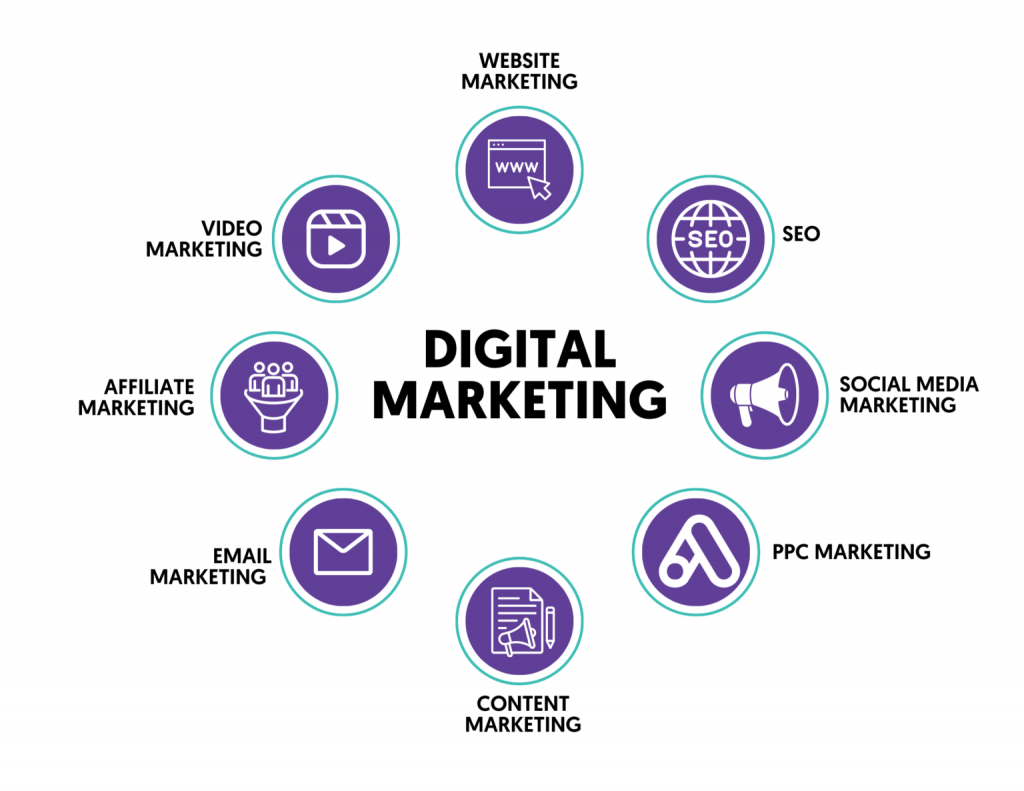
To expand your online reach and establish your place on the internet, you should consider your strategy as a digital marketing roadmap. It’s undeniable: the internet has a lot of value.
Websites and companies differ as well. In order to achieve, track, and refine specific goals, digital marketing strategies need to use the right tools and channels.
In an ever-changing digital landscape, where would you begin in order to create and optimize your marketing strategy to make the most of this?
What Is A Digital Marketing Strategy?
An organization’s digital marketing strategy should demonstrate how digital channels can help them achieve their business objectives.
A successful digital marketing strategy aligns with the company’s key performance indicators (KPIs). A successful strategy includes the following elements:
- Online channels.
- Regions and target audiences.
- Components of the messaging system.
- Finances
Identifying the right channels is a key part of a digital marketing strategy.
The following channels can be used (but are not restricted to):
- Search engines
- Social media platforms
- Websites
- Apps
There is more to a digital marketing strategy than identifying channels. Achieving effective communication with your target audience requires a combination of consistency and relevance.It’s important to communicate consistently across all channels, but brands should engage and communicate differently with customers depending on the platform.
Read More: Mobile App Development: Native vs. Hybrid vs. Progressive Web Apps
How Digital Tactics And Strategies Differ
Strategies and tactics are often confused by many brands, so they end up being mixed together. Both strategy and tactics are essential elements of a marketing plan, but they serve different purposes. Strategy plays a key role in helping brands reach overarching company objectives. Conversely, tactics are actions taken to achieve a greater marketing objective.
Characteristics of a Strategy:
Any strategy, whether marketing-based or not, consists of three parts:
- Identifying the challenge you are facing
- Approaching the challenge with a guiding policy
- Identifying and implementing targeted actions to achieve a policy goal
You may have several moving parts in your marketing strategy, each with a different goal, depending on the size of your business. Working on a strategy can sometimes be challenging. Keep these three steps in mind to stay on top of your marketing strategy whenever you feel overwhelmed.
Characteristics of a Tactic:
Tactics are the specific steps taken to achieve your overall vision, while strategies provide the framework.
An effective tactic should include the following:
- Make your goals specific, measurable, and actionable
- Ensure alignment with the overall strategy
- Limit your timeframe to a reasonable amount
Depending on your marketing strategy, you may decide to implement a variety of marketing tactics such as email marketing campaigns, blogging, or organizing an event to reach your target audience.
| Strategy | Tactics |
| Long-term goals | Short-term goals |
| Part of a larger company plan | Individual campaigns or initiatives |
| Channel-oriented (e.g., SEO, PPC, social media) | Audience-oriented (e.g., demographics, interests, behaviors) |
| Provides a roadmap for tactics | Achieve specific, measurable objectives |
| Generate 500 qualified leads per month Or Increase social media engagement by 20% OrBoost sales by 15% in the next holiday season | Increase website traffic by 10% in the next quarter |
An example of a digital strategy is paid media marketing. There are several tactics that could be included in paid media marketing, including:
- Google or Microsoft paid search ads.
- Audience testing on the Google Display Network (GDN).
- Optimizing the conversion rate of landing pages or ad copy creatives.
In summary, tactics are not the same as strategies. It is important to choose tactics based on the strategy you are implementing.
Digital strategies examples
In spite of the fact that digital marketing strategies and their tactics may share characteristics across brands, they will look different from one another. There is no such thing as a “one size fits all” strategy.
Digital marketing strategies used by brands around the world include:
- Advertising that is paid per click (PPC).
- Optimizing your website for search engines (SEO)
- Content marketing.
- E-commerce.
- Email marketing.
- Social media marketing.
Read More: The Future of Digital Marketing Trends
Paid Per Click Advertising
The PPC model involves companies paying for each click that leads users to their company’s website. The most common PPC campaigns are run on Google and Microsoft Adwords.
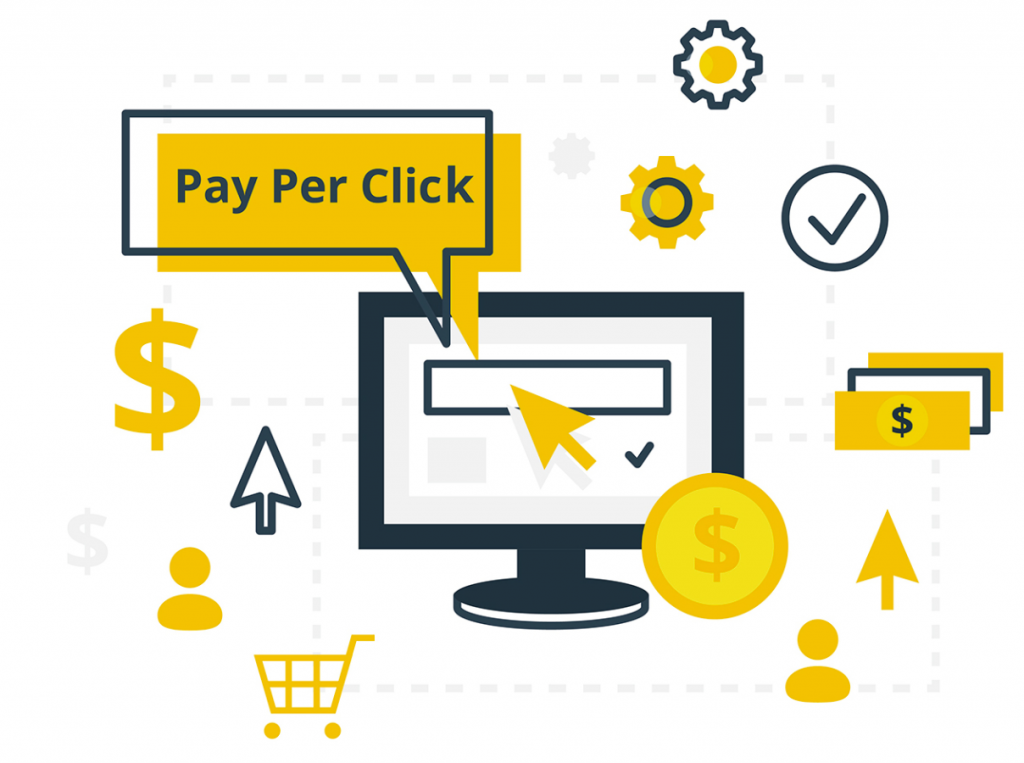
Within these two PPC platforms, advertisers can choose from multiple types of campaigns based on their goals. These comprise of:
- Search ads
- Display ads
- Shopping ads
- YouTube ads
- App ads
- Discover ads
- Performance Max
In PPC ads, brands can hyper-target their ads to specific audiences or target the masses according to their goals. A brand’s main goal with PPC is to increase traffic, sales, and conversions.
Search Engine Optimization
In search engine optimization (SEO), websites, apps, and content are optimized so that they rank higher on search engines.
By optimizing a brand’s website and content, it can increase organic (non-paid) search visibility, resulting in more traffic.
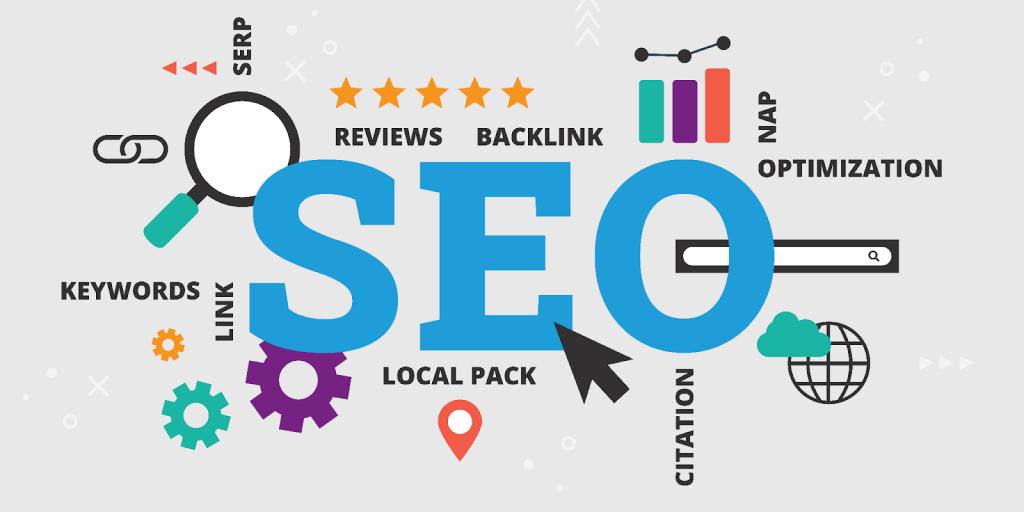
Indirect costs related to SEO include: While there are no “direct” costs associated with SEO (unlike PPC advertising), there are indirect costs related to:
- Time and fees charged by employees or agencies.
- The cost of third-party platforms or technology.
With a strong SEO strategy, your reliance on PPC marketing can be reduced over time, resulting in a more efficient budget.
Content Marketing
There are some “behind-the-scenes” functions to this strategy. A company’s target audience can benefit from the creation of (and sharing of) unique and valuable content.

Creating different types of content for each digital platform is an important part of a content marketing strategy.
In order to create content for the TikTok platform, a brand would have to create short video clips (maximum three minutes in length).
Additionally, if a brand wants to enhance its brand authority, it may develop a long-form blog and article strategy.
The purpose of content marketing is to help build trust with the target audience and turn them into long-term, repeat customers.
E-commerce
To achieve a business’s goals, e-commerce should be a key component of a brand’s business strategy.

Consumers need easy access to an online storefront if they are to be able to implement an e-commerce strategy.
E-commerce strategies can include the following tactics:
- Brands can sell directly to consumers (DTC) through an online storefront.
- Amazon is a popular online marketplace for selling physical products.
- Establishing affiliate programs where others can earn money by promoting brands’ products.
- Drive sales with paid shopping ads on Google and Microsoft.
- Marketing with influencers and brand ambassadors.
Email Marketing
Email marketing is a component of digital strategy that involves reaching out to potential and existing customers with targeted messages. Customer journeys are designed to drive leads, sales, and transactions through email marketing.
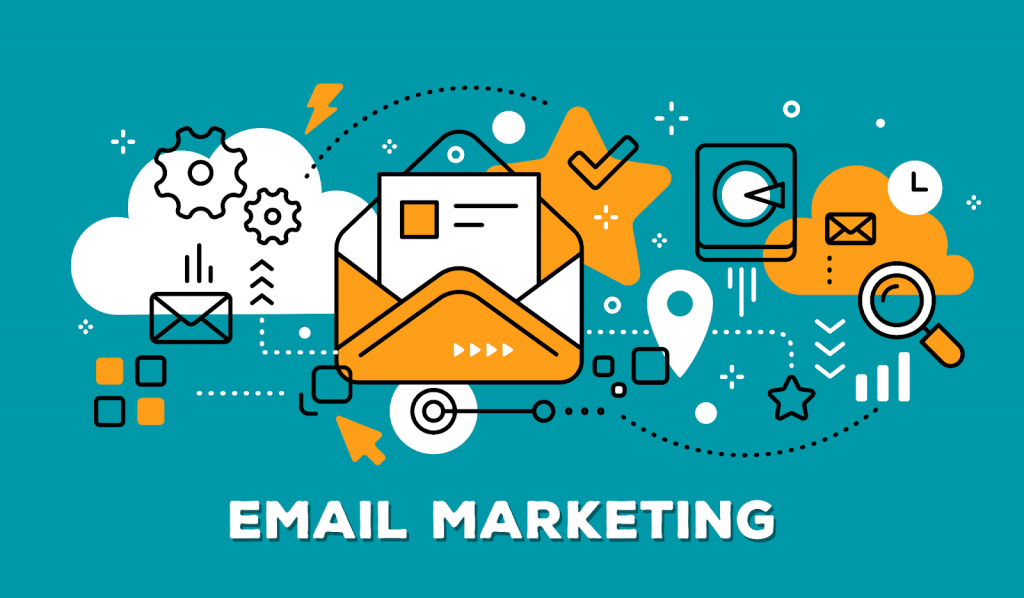
For example, after getting engaged, a bride is looking for the perfect wedding invitations.
To guide the user through the planning process, an email strategy cadence is created after they subscribe to the brand’s email or marketing communications. That could include:
- Invitations with free samples are being promoted.
- Personalized wedding invitations at a discount.
- After the wedding, you will receive free (or discounted) Thank You cards.
- Creating word-of-mouth sales through referral programs.
Social Media Marketing
Depending on the brand, social media marketing strategies have different goals and use cases.
Social platforms can play a significant role in promoting content or engaging with target audiences as part of the larger digital marketing strategy.
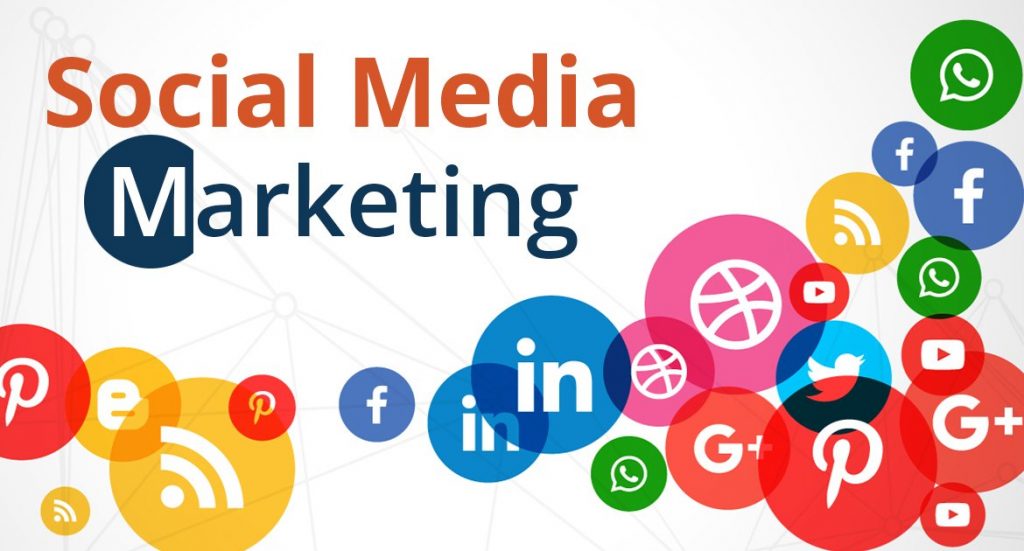
In social media marketing, the following tactics can be used:
- Posting organic content.
- Targeting audiences with paid ads on platforms.
- Implementing influencer marketing campaigns according to the specific objective.
Digital marketing tools
For successful digital marketing today, mastering the core tools is essential. The use of these tools can significantly improve the visibility and engagement of your brand. Here are some essential digital marketing tools:
- Websites: The cornerstone of your online business, requiring constant optimization to increase visibility and user experience.
- Online reviews: An important aspect often overlooked is building trust and gaining valuable feedback.
- Social media marketing: Create communities and engage your audience on platforms such as Facebook.
- Listings Management: Use visuals and keywords to optimize your profile across multiple directories.
- Content Marketing: Parabol’s success can be attributed to its ability to create valuable and unique content.
- Email Marketing: Develop targeted, segmented campaigns to drive conversions.
- SEO (Search Engine Optimization): Boost organic traffic and search rankings by mastering SEO.
- Digital Advertising: Traffic, leads, and conversions are driven by targeted and compelling content.
- AI (Artificial Intelligence): Employ AI to create content, analyze data, and develop efficient marketing strategies.
How do you create a digital marketing plan?
If you don’t consider all the aspects that could influence the success of a marketing plan before implementing it, you may fail. For example, companies with blogs generate 67% more leads than those without blogs, which proves the importance of digital marketing: it can make a significant difference to a business. Considering there are 5,000 ads people see each day, it is imperative that your marketing strategy stands out so that your target audience sees your message.
In recent years, digital communication channels have gained importance in project success. Project success has become increasingly dependent on digital communication channels. Among the 4.2 billion Internet users in the world, 55% have Internet access according to Forbes. Digital commerce is dominated by mobile devices: 51% of purchases are made through them. The mobile market can’t be ignored, and we have to ensure that our content is mobile-friendly.
Identifying a target audience (buyer persona) is the basic step in structuring a marketing plan, along with establishing some business goals and creating an appropriate value proposition, all of which are essential to the success of the plan.
During the outline process of our marketing plan, there are a number of items that should not be forgotten. By using them, we can articulate and plan our campaigns more effectively:
- Identify short-term, medium-term, and long-term business goals.
- A digital strategy for achieving goals.
- Using the right channels.
- Plans for action and development.
- Finances and investments.
- Timeline and roadmap.
One of the fathers of modern marketing, Philip Kotler, explained that a traditional marketing plan serves as follows: “to document how the organization’s strategic objectives will be achieved through specific marketing strategies and tactics, with the customer as the starting point. It is also linked to the plans of other departments within the organization.”
To stay focused, we should keep this statement nearby.
How should your company approach digital marketing? Most of the time, the answer is a resounding yes: 100% yes. In order for it to succeed, it must do the following:
- Grasp your customers’ attention, convince them, and convert them to customers.
- Decide who your target customers are and plan all the strategies and actions needed to reach them.
- Provide value to customers at every stage of their journey by segmenting your marketing campaigns.
Identifying your company’s online domain, target audience, channels to use, and competitor information is necessary before developing a digital marketing plan.
Read More: Difference between ‘Manual’ and ‘Advantage Plus Placements’ on Meta (Facebook) Ads
Digital Marketing Strategies: How to Make Them Work
- Personify your buyers.
- Choose the right digital marketing tools for your goals.
- Analyze your digital assets and channels.
- Plan and audit your owned media campaigns.
- Plan and audit your earned media campaigns.
- Plan and audit your paid media campaigns.
- Organize your digital marketing campaigns.
- Personify your buyers
It is crucial to determine your target audience whether you are utilising traditional or digital marketing. You should start by creating thorough buyer personas, as they are the foundation of every successful digital marketing plan.
A buyer persona, which is developed through market research, surveys, and interviews with your target market, stands in for your ideal customer or customers.
Whenever feasible, you should base the facts that guides your marketing plan on actual data because drawing assumptions can have unfavourable outcomes.
To obtain a complete image of your persona, your research pool should comprise customers, prospects, and non-contact database users who are in line with your target market.
But, the question is: How should you gather information for your digital marketing strategy based on your buyer persona(s)?
The answer depends on whether you sell to B2B or B2C customers, or whether you sell high-end or low-end goods.
The following starting points can be customized and fine-tuned to meet the needs of your business.
Statistics and Demographics
Location: Analyze your website traffic by location with web analytics tools.
Age: You may need to consider your business’ age depending on whether this information is relevant. However, if it is necessary for your business, you should identify trends in your existing prospect and contact database in order to collect this information.
Income: It’s ideal to collect this information through persona research interviews as people may be reluctant to submit sensitive information, such as personal income, via online forms.
Job title: This information is especially pertinent to B2B companies, but it can also be gleaned from your current customer base.
Analytical and Psychographic Data
Objectives: Depending on the issue your product or service resolves, you may already be aware of the objectives of your customer persona. Verify your assumptions by having conversations with actual clients as well as internal sales and customer support agents.
Difficulties: Determine the typical difficulties that members of your audience encounter by speaking with consumers, sales and customer support agents, and any other staff members who deal directly with customers.
Interests and Hobbies: Find out what interests and hobbies your target demographic and your customers have in common. For fashion firms, for instance, it might be crucial to determine whether a sizable portion of your target market is also interested in health and fitness.
Priorities: Find out what matters most to your target audience members and consumers. It’s extremely valuable to know your audience values customer service over a competitive price point, for example, if you’re a software company that sells to B2B companies.
Your business can benefit from creating accurate and highly valuable buyer personas by combining these details.
- Choose the right digital marketing tools for your goals
The marketing goals of your company should always be tied to its fundamental objectives.
In order to achieve your business’ goal of increasing online revenue by 20%, your marketing team may set a goal, for example, to generate 50% more leads from the website than they did last year.
With the correct tools, you can monitor the progress of your approach regardless of your ultimate digital marketing objective.
The HubSpot Reporting Dashboard, for instance, consolidates all your marketing and sales data into one place so you can easily decide which strategies are working and which ones aren’t.
- Analyze your digital assets and channels
If you’re reviewing your existing digital marketing channels and assets to decide what to incorporate into your strategy, it’s important to first take a step back and look at the big picture – this will help you avoid feeling confused or overwhelmed.
Make a spreadsheet and classify all of your assets and cars so you can see exactly what owned, earned, and paid media you currently have.
Based on the owned, earned, and paid media framework, classify the digital “vehicles,” assets, or channels you already use and determine which is ideal for your plan.
Owned Media
You can think of these as digital assets owned by your brand, whether they are your website, social media profiles, blogs, or images. It is your business’s own channels that it has complete control over.
Additionally, you may own off-site content that is not hosted on your website (e.g. a Medium blog).
Earned Media
Any exposure you receive from word-of-mouth promotion qualifies as earned media. It could be content you’ve written for other websites (e.g. guest posts), PR work you’ve done, or the customer service you’ve provided. In return for your efforts, you receive earned media recognition.
It is possible to earn media exposure by getting positive press mentions and reviews, as well as by sharing your content on social media.
Paid Media
A paid media vehicle or channel is any vehicle or channel that you buy to attract your buyer personas’ attention.
For instance, native advertising (such as sponsored postings on other websites), social network posts that are paid for, Google Ads, etc.
Now that you are aware of the components of this framework, let’s examine an example.
Let’s say you have an owned piece of content on a landing page that contributes to lead generation on your website. You want to use all the components of the system, not just the owned, earned or bought media.
Make sure the material you create is shareable so that users may share it on social media and generate more leads. You will consequently see an increase in visitors to your landing page. This is part of earned media.
Your material may be more successful if you post about it on your Facebook page and pay to have more members of your target audience view it.
It is this way that the three parts of the framework can work together to ensure success, although it isn’t a requirement. A successful owned and earned media campaign might not require you to invest in paid media. Decide which marketing channels work best for your business, then evaluate the best solution to help you achieve your goal.
You can now evaluate which items to keep and which to remove based on what’s already being used.
- Plan and audit your owned media campaigns
Owned media is the foundation of digital marketing, and it almost always takes the form of content. It doesn’t matter what your brand broadcasts, whether it’s a product description, a blog post, an ebook, an infographic, a podcast, or a social media post, you can categorize it as content.
Content not only makes your brand more visible online, but it also assists in converting website visits into leads and sales. By optimising this material for search engines, you can increase both your organic traffic and search engine rankings (SEO).
A key element of any digital marketing plan is owned content. Selecting the content you will employ is the first step towards achieving your objectives.
Unless you have somehow used the About Us page as a lead generation machine in the past, your strategy is not likely to include the About Us page if you want to generate 50% more leads this year than last year.
Audit your currently published content
Ranking your existing owned content based on previous performance is a good way to determine what has historically performed best in relation to what you are trying to accomplish.
For example, to rank your content according on which blog posts, eBooks, or website pages brought in the most leads last year, if your goal is to produce leads.
By identifying what is working now and what isn’t, you will be able to plan future content more effectively.
Identify gaps in your existing content
Examine your content and identify any gaps using your buyer personas.
Create some study methods for your personas if you’re a math tutoring company and you know that finding effective methods of studying is one of their biggest challenges. Ebooks hosted on certain landing sites may perform better than webinars, according to your content audit analysis. For this math tutoring business, one of your content production strategies could be to write an ebook on “how to make studying more effective”.
Make a plan for creating content.
Based on the gaps you’ve seen and the content you need to accomplish your objectives, create a content production plan.
The following should be included:
- A title
- Arrangement
- A goal
- Channels of promotion
- The purpose of creating the content
- Content priority level
This can be a spreadsheet that includes information about the budget depending on whether you’re outsourcing content creation or producing it yourself.
- Plan and audit your earned media campaigns
You can get a better understanding of where your time should be spent by comparing your previous earned media with your current goals. You should rank earned media sources from most effective to least effective in terms of traffic and leads (if that’s what you want).
If you contribute articles to the industry press, you may notice a lot of qualified traffic is driving to your website, which in turn boosts conversions. In addition, you might find that people share most of their content on LinkedIn, which results in a higher traffic volume.
On the basis of historical data, you can determine which types of earned media will assist you in reaching your goals (and which won’t). However, if you’re interested in trying something new, don’t discount it because it’s never been done before.
- Plan and audit your paid media campaigns
Much of the process is similar: You need to evaluate how your current paid media is performing across a variety of platforms (e.g. Facebook, Twitter, Google Adwords, etc.) to determine what is most likely to help you reach your current goals.
Because advertisements can be costly, if you’ve invested a lot of money in them but aren’t seeing the desired results, it could be time to adjust your strategy or end the campaign entirely and concentrate on using a different platform.
Following this procedure, you ought to be able to identify with clarity which paid media channels you want to stick with and which (if any) you want to drop.
- Plan your online advertising initiatives
You are now aware of the components that will comprise your digital marketing strategy after careful planning and investigation.
Here are the main ideas that you should have been clear on thus far, to recap:
- The buyer persona(s) you want to target
- Specific goals for digital marketing
- Media inventory for owned, earned, and paid content
- Analyzing your existing earned, owned, and paid media
- Plans or wish lists for owned content creation
Structure of a Digital Marketing Plan
Creating buyer personas and comprehending your target demographic are the first steps towards success in digital marketing. Establish quantifiable objectives to monitor your advancement. Create engaging content consistently and consider professional writing services if needed. Evaluate existing marketing channels, refine successful elements, and explore innovative approaches.Utilise systems for marketing automation to simplify work. Make mobile friendliness your first priority for a flawless user experience. Optimize landing pages and CTAs for clarity and visibility. Invest in tools that enhance efficiency and maintain a human touch. Reinforce your unique selling proposition (USP) in your messaging. Continuously monitor and improve your strategy, embracing a culture of learning and adaptation.
Step 1: Situational analysis
An internal and external examination of the business (SWOT analysis) should be done before creating your digital marketing plan. You can evaluate your company’s strengths, weaknesses, opportunities, and threats through the SWOT analysis, a framework you can use for this purpose.
Our customers’ needs should be understood, as well as where they are addressed within the ecosystem in which we operate. This investigation is both qualitative and quantitative, looking at things like influencers, intermediaries, digital habits, and more.
Identifying and analyzing best practices and success stories is a very common practice in companies to build your digital marketing strategy.
Moreover, we need to conduct an internal study to determine the state of our company in the digital age: is it customer-focused? Does it work well and how does it feel to browse? Does our blog get updated regularly? How would you describe the current positioning of your website? Where do we stand on social media?
Step 2: Establish Digital Marketing Goals
Once you have a clear idea of where you fit in the market and what your strengths are, set some goals to guide your actions.Everything you plan needs to be in line with your goals if you want to accomplish them.
You may create clear, quantifiable, doable, pertinent, and timely goals for your digital marketing strategy with the use of the SMART goals framework.
The following is an example:
- A SMART goal would not be, “I want to increase the number of visits to my website.”
- In three months, my SMART goal is to get 20,000 monthly visits to my website. I’m going to do X, Y, and Z to get this done.”
Step 3: Specify the Marketing Plan.
After defining your business objectives, what will you do next? Personalisation is becoming more and more important in digital marketing. To ensure you have a successful plan, take these factors into account when defining your strategy:
- Identifying your target audience: Understand their tastes, needs, or preferences, where do you see yourself meeting their expectations, etc. This is the ideal moment to develop your buyer character.
- Positioning: To attain the right positioning, make sure that your value proposition is distinct and conveyed to your audience in the same manner. It’s also important to know how to present this idea in an efficient manner on digital media.
- What makes you different from your competitors? Identify the channels where your audience is active (social media, blogs, email, etc.). Communicate your proposition on the “About Us” page as well.
- Content strategy: The creation, dissemination, and management of unique material that draws viewers in and establishes the brand as a reference point comprise content strategy. For every channel, you also need to develop a content marketing plan. Buyer Personas and content strategy are intimately linked; neither can be separated. Identify the types of content your BP consumes, the formats they prefer, their reference measures, and the people and groups they follow. You can create content that is appropriate by taking as much information as you can from their profile.
Content strategies are executed using the following tools:
- SEO positioning: To improve our SEO positioning organically, we conduct keyword research to identify relevant keywords to use in our content. To be successful with your content strategy, you need to be found by search engine users.
- Content calendar: Use a content calendar to make sure your plan makes sense. It not only adds value but also enables you to look ahead, make the most of your resources, come up with ideas, and more.
- To be successful with your content strategy, you need to be found by search engine users.
- Content calendar: Use a content calendar to make sure your plan makes sense. It not only adds value but also enables you to look ahead, make the most of your resources, come up with ideas, and more.
- Among the information you should include in a content calendar are the date of publication, the author, the subject of the post, the keyword, the tags that should be used, etc.
- Social posting: Posting an article without promoting it on social media is a mistake. You don’t spam social media with posts, but rather plan out what you will post and when on every social media platform, using the best copy for each, along with the ideal number of characters, links, hashtags, and more. Team members ought to participate in the information dissemination process, and we ought to motivate them to post articles, intriguing links, and other materials on their business websites (LinkedIn). Employees can even receive notifications when new content is added to the company page.
Step 4: Digital Methods and Approaches
Depending on our goals (attraction, conversion, and loyalty), we’ll use a variety of tactics, such as social media, email marketing campaigns, CRM, web optimisation, SEO techniques, paid media advertising, etc. You can offer a variety of value formats for acquisition, such as webinars, ebook downloads, infographics, and offers, along with discounts, promotions, and discounts.
These days, it’s essential that we employ marketing automation technologies that enable us to automate our marketing campaigns, as channels are increasing and the quantity of data we obtain about our clients is growing.
You’ll be able to quickly construct hundreds of campaigns using these strategies. Your message will be tailored to your buyer profile, improving the likelihood that it will be received. Their encounters with the company might also lead to the conversion of these individuals into customers.
Step 5: Measuring Results & KPIs
The effort is far from over once your digital marketing plan has been created and implemented. One of the most important steps in the process is analysing the results. Optimising the performance and spending of digital marketing is increasingly dependent on analytics.
In order to determine whether we earned the expected ROI, we need to measure every action using KPIs. By monitoring the success of our digital marketing initiatives and plans, we can make necessary corrections to what isn’t working.
In order to conduct this analysis, we need tools that allow us to do so. The Salesforce platform, for example, enables us to analyze all actions performed by the user and see how they react and behave along the way. In addition, we use Salesforce’s Al to extract important data, enhance user experience, and provide each lead with the content they need at the appropriate moment.
Ensure your data visualization system is real-time and effective. Identifying opportunities and room for improvement in the digital world requires you to be on the lookout at all times. The value of data cannot be overstated, as without it we are blind and unable to make logical decisions. To ensure the exchange and use of as much data as possible, Mulesoft integration software allows you to connect systems with each other and ensure that data is compiled and processed. You can benefit from it in conjunction with the Salesforce ecosystem.
If you want to position yourself and boost your presence in the digital space, don’t leave anything to chance when creating your digital marketing plan. As you create personalized, automated, and ultimately successful marketing campaigns, remember that technology can turn out to be your greatest ally. With the new tools available, you can simplify your work and boost your performance as the task becomes more complex.

